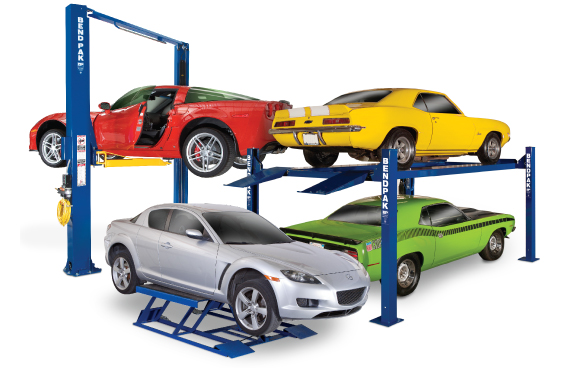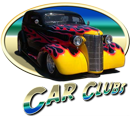
Detailed Vehicle Lift ComparisonsWe know that there are many options out there when it comes to choosing a car lift. It's important to the Best Buy Auto team that we are here to help you make the best decision, no matter what kind of equipment you're looking for. With the many options available for car and vehicle lifts, and the size of the investment, it's incredibly important to know the uses, benefits, and drawbacks of each type. The first type of lift is the four-post car lift. Four-post lifts are often referred to as "drive-on" lifts because they allow vehicles to be driven directly onto the runways that lift the vehicle. They're available in various sizes, styles, and capacities, making them perfect for use in auto shops and home garages. Parking lifts are a type of 4-post lift designed to store a vehicle but rarely designed to allow easy access to the vehicle for repair and maintenance. Four-Post Car Lift Pros: Four-Post Car Lift Cons: The next type of lift is the two-post car lift. This is another very common car lift that is equipped to handle many different types of vehicles. Two-post car lifts can either be symmetrical or asymmetrical. If the lift is symmetrical, it means that the posts of the lift directly face each other, and each support arm holds about 50% of the weight. Asymmetrical car lifts have swing arms that are not the same length in the front and the back. They also feature a rotated post design. As a result, asymmetrical car lifts have a shifted center of gravity, which is beneficial for long vehicles like trucks that tend to be unbalanced. Two-Post Car Lift Pros: Two-Post Car Lift Cons: Generally, the two most common auto lifts are two-post and four-post, which make up most of the lifts you'll find in workshops and garages. Less commonly used are lifts designed for special situations and use, known as specialty lifts. These can include scissor lifts, mobile lifts, and parking lifts. Scissor lift is a broad term that covers any car lift that uses an accordion-like mechanism to raise a single vehicle. Scissor lifts can be divided into three different types: X type, parallelogram type, or pantograph type. This distinction depends on the configuration of the cylinders and the raising rods. Scissor lifts are great for both professional use and home garage use because they're available in a wide range of capacities and heights. Scissor Car Lift Pros: Scissor Car Lift Cons: Alignment car lifts are unique because they have special features that make it easier to perform alignment services on cars or trucks. Four-post and scissor lifts can also be alignment lifts, as long as they include a runway for the vehicle tires to rest on. These runways include built-in turn plates and slip plates that allow the vehicle's wheels to turn easily and without resistance. Alignment car lifts were originally designed for auto repair shops but can also be used in home garages. Alignment Car Lift Pros: Alignment Car Lift Cons: Mobile Column Car Lift Pros: Mobile Column Car Lift Cons: Remember, the lifts listed above are only the primary kinds of lifts, and other options are available. What type of lift is right for you depends on your needs and how you intend to use it. We hope that this article has helped answer some basic questions you may have had about car lifts. However, should you need any additional information, or have a question about any of our lifts, don't hesitate to reach out to us and let us know!
|
Homepage


Installation & Delivery, Service, Parts, Will Call
Locations Across The Nation
TO SERVE
THE ENTIRE
COUNTRY








 Owned & Operated in the U.S. since 1987
Owned & Operated in the U.S. since 1987




